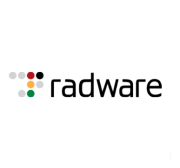A Web Application Firewall (WAF) is a specialized security tool designed to protect web applications by monitoring and filtering HTTP traffic between a web application and the Internet. It plays a crucial role in safeguarding against threats and vulnerabilities.
WAFs help defend web applications from several common threats by analyzing requests to prevent malicious data from passing through. These solutions work by effectively blocking common attacks such as SQL injection and cross-site scripting, offering a degree of security that firewalls alone cannot achieve. By performing deep packet inspection, WAFs ensure only legitimate traffic reaches the application, thus protecting sensitive data and maintaining user conformity.
What features are important in a WAF?In e-commerce, a WAF ensures customer data remains secure by protecting against frequent threats targeting transactional data. Financial institutions use WAFs to maintain the integrity of sensitive information and prevent unauthorized access. In healthcare, these solutions help safeguard patient information by compliance with data protection standards.
Organizations utilize WAFs to secure their web applications against increasingly sophisticated cyber threats. They are an effective defense mechanism that complements existing security strategies, offering both protection and peace of mind for businesses managing online platforms.
| Product | Market Share (%) |
|---|---|
| F5 Advanced WAF | 9.0% |
| Microsoft Azure Application Gateway | 7.5% |
| Imperva Application Security Platform | 7.5% |
| Other | 76.0% |




























































































A WAF works by preventing unauthorized data from leaving the app by adhering to a set of policies that help determine what traffic is malicious and what traffic is safe. A WAF acts as a transparent reverse proxy, or an intermediary that protects the web app server from a potentially malicious client. The proxy ensures that all traffic passes through it and separately sends filtered traffic to the application, hiding the IP address of the application service. In order to work properly, many WAFs require you to update their policies regularly to address new vulnerabilities. The policies tell the firewall what needs to be done if vulnerabilities or misconfigurations are found. Some WAFs, however, use machine learning to enable policy updates automatically.
A WAF is usually placed close to the internet-facing applications. In most application architectures, a WAF is typically positioned behind the load-balancing tier to maximize utilization, reliability, performance, and visibility.
Without properly securing web applications, organizations face a very high risk of leaking their data. Attackers can always exploit the vulnerabilities of an application to gain access to the database, after which they could view, change, delete, and even exfiltrate data. If you do not have a WAF in place, data breaches are more likely to occur, which could potentially lead to the deterioration of customer trust, reputation, brand value, and share value, as well as direct financial loss due to heavy fines. In addition, a WAF is necessary because it helps meet compliance requirements, apart from also providing data encryption and multi-factor authentication.
A Web Application Firewall specifically protects web applications by monitoring, filtering, and blocking HTTP traffic to and from a web service. Unlike traditional firewalls that safeguard networks from unauthorized access, WAFs focus on HTTP layer traffic, which is often exploited through vulnerabilities like SQL injection or cross-site scripting. You will find that using a WAF adds an essential layer of security to protect sensitive data communicated between clients and servers.
What are the benefits of deploying a cloud-based Web Application Firewall?Deploying a cloud-based WAF offers several advantages including scalability, cost-effectiveness, and simplified maintenance. With cloud-based services, you don't need to manage hardware, which reduces operational costs and allows for easy updates and scalability according to traffic demands. You also benefit from a globally distributed infrastructure that enhances performance and reliability, ensuring better protection against DDoS attacks and reduced latency for users across different locations.
What are the key features to consider when choosing a WAF solution?When selecting a WAF, consider features such as real-time threat intelligence, ease of deployment, customization capabilities, and the level of comprehensive reporting and analytics. Real-time threat intelligence helps in adapting to emerging threats quickly. An intuitive user interface and flexible deployment options are crucial for seamless integration into your existing infrastructure. Additionally, robust analytics and reporting capabilities enable you to gain insight into attack patterns and make informed decisions on bolstering security measures.
How does SSL/TLS termination work with Web Application Firewalls?SSL/TLS termination is the process of decrypting HTTPS traffic so that the WAF can inspect the content. This is done by intercepting traffic between a client and an application server. You might choose to implement SSL/TLS termination at the WAF, allowing it to decrypt and analyze traffic before re-encrypting it and sending it to its destination. This approach enables the WAF to detect and block malicious content that might be encrypted, ensuring better security without sacrificing performance.
Can AI and machine learning enhance the capabilities of a Web Application Firewall?Yes, AI and machine learning significantly enhance WAF capabilities by improving threat detection and response times. These technologies can analyze vast amounts of data to identify patterns and anomalies that may indicate an attack. Machine learning algorithms can adapt to new threats and reduce false positives, allowing you to focus on genuine security concerns. AI-driven WAF solutions can automatically update their rulesets, providing proactive protection while requiring less manual intervention.